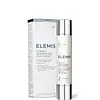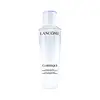What's inside
What's inside
 Key Ingredients
Key Ingredients

 Benefits
Benefits

 Concerns
Concerns

 Ingredients Side-by-side
Ingredients Side-by-side

Water
Skin ConditioningLactic Acid
BufferingPrunus Amygdalus Dulcis Oil
Skin ConditioningSodium Hydroxide
BufferingPolyacrylate Crosspolymer-6
Emulsion StabilisingHydroxyethyl Acrylate/Sodium Acryloyldimethyl Taurate Copolymer
Emulsion StabilisingPhytic Acid
Phenoxyethanol
PreservativeGlycerin
HumectantBetula Alba Juice
AstringentCitric Acid
BufferingPEG-40 Hydrogenated Castor Oil
EmulsifyingTrideceth-9
EmulsifyingSodium Benzoate
MaskingTocopherol
AntioxidantAmmonium Acryloyldimethyltaurate/Vp Copolymer
Tartaric Acid
BufferingParfum
MaskingPotassium Sorbate
PreservativeHelianthus Annuus Seed Oil
EmollientPolysorbate 60
EmulsifyingSorbitan Isostearate
EmulsifyingYeast Extract
Skin ConditioningPropylene Glycol
HumectantT-Butyl Alcohol
PerfumingPapain
Skin ConditioningHexyl Cinnamal
PerfumingLimonene
Perfuming1,2-Hexanediol
Skin ConditioningCaprylyl Glycol
EmollientBehenyl Alcohol
EmollientBenzyl Salicylate
PerfumingButyrospermum Parkii Butter
Skin ConditioningChlorphenesin
AntimicrobialTuber Aestivum Extract
Skin ProtectingAlpha-Isomethyl Ionone
PerfumingHydrogenated Castor Oil
EmollientStearyl Alcohol
EmollientProtease
ExfoliatingSubtilisin
Skin ConditioningTocopheryl Acetate
AntioxidantCitrus Aurantium Amara Leaf/Twig Oil
MaskingWater, Lactic Acid, Prunus Amygdalus Dulcis Oil, Sodium Hydroxide, Polyacrylate Crosspolymer-6, Hydroxyethyl Acrylate/Sodium Acryloyldimethyl Taurate Copolymer, Phytic Acid, Phenoxyethanol, Glycerin, Betula Alba Juice, Citric Acid, PEG-40 Hydrogenated Castor Oil, Trideceth-9, Sodium Benzoate, Tocopherol, Ammonium Acryloyldimethyltaurate/Vp Copolymer, Tartaric Acid, Parfum, Potassium Sorbate, Helianthus Annuus Seed Oil, Polysorbate 60, Sorbitan Isostearate, Yeast Extract, Propylene Glycol, T-Butyl Alcohol, Papain, Hexyl Cinnamal, Limonene, 1,2-Hexanediol, Caprylyl Glycol, Behenyl Alcohol, Benzyl Salicylate, Butyrospermum Parkii Butter, Chlorphenesin, Tuber Aestivum Extract, Alpha-Isomethyl Ionone, Hydrogenated Castor Oil, Stearyl Alcohol, Protease, Subtilisin, Tocopheryl Acetate, Citrus Aurantium Amara Leaf/Twig Oil
Water
Skin ConditioningButylene Glycol
HumectantC15-19 Alkane
SolventLactic Acid
BufferingSodium Hydroxide
BufferingGlycolic Acid
BufferingAnanas Sativus Fruit Extract
Skin ConditioningFagus Sylvatica Bud Extract
TonicPapain
Skin ConditioningPEG-32
HumectantBisabolol
MaskingCitric Acid
BufferingPhytic Acid
Ascorbyl Glucoside
AntioxidantTocopherol
AntioxidantVitis Vinifera Seed Oil
EmollientCaprylyl Glycol
EmollientHelianthus Annuus Seed Oil
EmollientPropanediol
SolventRosa Damascena Flower Oil
MaskingBenzoic Acid
MaskingRosmarinus Officinalis Extract
AntimicrobialSalicylic Acid
MaskingWater, Butylene Glycol, C15-19 Alkane, Lactic Acid, Sodium Hydroxide, Glycolic Acid, Ananas Sativus Fruit Extract, Fagus Sylvatica Bud Extract, Papain, PEG-32, Bisabolol, Citric Acid, Phytic Acid, Ascorbyl Glucoside, Tocopherol, Vitis Vinifera Seed Oil, Caprylyl Glycol, Helianthus Annuus Seed Oil, Propanediol, Rosa Damascena Flower Oil, Benzoic Acid, Rosmarinus Officinalis Extract, Salicylic Acid
Ingredients Explained
These ingredients are found in both products.
Ingredients higher up in an ingredient list are typically present in a larger amount.
Caprylyl Glycol is a humectant and emollient, meaning it attracts and preserves moisture.
It is a common ingredient in many products, especially those designed to hydrate skin. The primary benefits are retaining moisture, skin softening, and promoting a healthy skin barrier.
Though Caprylyl Glycol is an alcohol derived from fatty acids, it is not the kind that can dry out skin.
This ingredient is also used as a preservative to extend the life of products. It has slight antimicrobial properties.
Learn more about Caprylyl GlycolCitric Acid is an alpha hydroxy acid (AHA) naturally found in citrus fruits like oranges, lemons, and limes.
Like other AHAs, citric acid can exfoliate skin by breaking down the bonds that hold dead skin cells together. This helps reveal smoother and brighter skin underneath.
However, this exfoliating effect only happens at high concentrations (20%) which can be hard to find in cosmetic products.
Due to this, citric acid is usually included in small amounts as a pH adjuster. This helps keep products slightly more acidic and compatible with skin's natural pH.
In skincare formulas, citric acid can:
While it can provide some skin benefits, research shows lactic acid and glycolic acid are generally more effective and less irritating exfoliants.
Most citric acid used in skincare today is made by fermenting sugars (usually from molasses). This synthetic version is identical to the natural citrus form but easier to stabilize and use in formulations.
Read more about some other popular AHA's here:
Learn more about Citric AcidHelianthus Annuus Seed Oil is the oil derived from the seeds of a Sunflower. Sunflower seed oil is non-fragrant. It is an emollient, meaning it helps to soften the skin.
Sunflower seed oil contains many fatty acids. The fatty acids found in sunflower seeds include (from highest amount to least): linoleic acid, myristic acid, palmitic acid, stearic acid, arachidic acid, oleic acid, and linolenic acid.
These fatty acids help the skin create ceramides. Ceramides play a role in repairing the skin barrier.
Helianthus Annuus Seed Oil helps moisturize the skin. This in turn helps the skin look more rejuvenated and smoother.
Sunflowers are rich in vitamin E.
Historians believe Indigenous cultures of North America domesticated sunflowers before corn. Thus they relied on sunflower oil for a variety of uses. One such use is moisturizing skin and hair.
Sunflower seed oil may not be fungal acne safe. We recommend speaking with a professional if you have any concerns.
Learn more about Helianthus Annuus Seed OilLactic Acid is another well-loved alpha hydroxy acid (AHA). It is gentler than glycolic acid but still highly effective.
Its main role is to exfoliate the surface of the skin by loosening the “glue” that holds dead skin cells together. Shedding those old cells leads to smoother, softer, and more even-toned skin.
Because lactic acid molecules are larger than glycolic acid, they don’t penetrate as deeply. This means they’re less likely to sting or irritate, making it a great choice for beginners or those with sensitive skin.
Like glycolic acid, it can:
Lactic acid also acts as a humectant (like hyaluronic acid). It can draw water into the skin to improve hydration and also plays a role in the skin's natural moisturizing factor (NMF) in the form of sodium lactate.
Studies show it can boost ceramide production to strengthen the skin barrier and even help balance the skin’s microbiome.
To get results, choose products with a pH between 3-4.
Lower strengths (5-12%) focus on surface exfoliation; higher strengths (12% and up) can reach deeper in the dermis (deeper, supportive layer) to improve skin texture and firmness over time.
Though it was originally derived from milk, most modern lactic acid used in skincare is vegan. It is made through non-dairy fermentation to create a bio-identical and stable form suitable for all formulations.
When lactic acid shows up near the end of an ingredient list, it usually means the brand added just a tiny amount to adjust the product’s pH.
Legend has it that Cleopatra used to bathe in sour milk to help reduce wrinkles.
Lactic acid is truly a gentle multitasker: it exfoliates, hydrates, strengthens, and brightens. It's a great ingredient for giving your skin a smooth, glowing, and healthy look without the harshness of stronger acids.
Read more about some other popular AHA's here:
Learn more about Lactic AcidPapain is an enzyme found naturally in the papaya plant's leaves, fruit, and roots. It has antimicrobial, soothing, and wound healing properties.
Glycine and Vitamin A are naturally found in papain.
While papain is often touted as skin-lightening, further studies are needed to prove this. However, papain has been shown to help soothe acne-inflammation.
Papain belongs to a class of enzymes called proteolytic enzymes. These enzymes break down peptides and amino acids.
Some studies found papain to be a potential skin sensitizer and allergen. Those with latex allergies might also be allergic to papaya.
Learn more about PapainPhytic Acid is a gentle AHA and antioxidant. AHAs are chemical exfoliants that help remove dead skin cells. Phytic Acid has a slight and mild exfoliating effect.
The chemical makeup makes it classified as an AHA, much like lactic acid.
In some cases, it is a chelating agent. Chelating agents help prevent metals from binding to water, helping to stabilize the ingredients in a product.
An interesting fact about phytic acid is that it is considered an antinutrient. People do not have the enzyme needed to properly breakdown and digest phytic acid. When ingested, phytic acid binds to minerals and prevents them from being absorbed.
Read more about some other popular AHA's here:
Learn more about Phytic AcidSodium Hydroxide is also known as lye or caustic soda. It is used to adjust the pH of products; many ingredients require a specific pH to be effective.
In small amounts, sodium hydroxide is considered safe to use. However, large amounts may cause chemical burns due to its high alkaline.
Your skin has a natural pH and acid mantle. This acid mantle helps prevent harmful bacteria from breaking through. The acid mantle also helps keep your skin hydrated.
"Alkaline" refers to a high pH level. A low pH level would be considered acidic.
Learn more about Sodium HydroxideTocopherol (also known as Vitamin E) is a common antioxidant used to help protect the skin from free-radicals and strengthen the skin barrier. It's also fat soluble - this means our skin is great at absorbing it.
Vitamin E also helps keep your natural skin lipids healthy. Your lipid skin barrier naturally consists of lipids, ceramides, and fatty acids. Vitamin E offers extra protection for your skin’s lipid barrier, keeping your skin healthy and nourished.
Another benefit is a bit of UV protection. Vitamin E helps reduce the damage caused by UVB rays. (It should not replace your sunscreen). Combining it with Vitamin C can decrease sunburned cells and hyperpigmentation after UV exposure.
You might have noticed Vitamin E + C often paired together. This is because it is great at stabilizing Vitamin C. Using the two together helps increase the effectiveness of both ingredients.
There are often claims that Vitamin E can reduce/prevent scarring, but these claims haven't been confirmed by scientific research.
Learn more about TocopherolWater. It's the most common cosmetic ingredient of all. You'll usually see it at the top of ingredient lists, meaning that it makes up the largest part of the product.
So why is it so popular? Water most often acts as a solvent - this means that it helps dissolve other ingredients into the formulation.
You'll also recognize water as that liquid we all need to stay alive. If you see this, drink a glass of water. Stay hydrated!
Learn more about Water